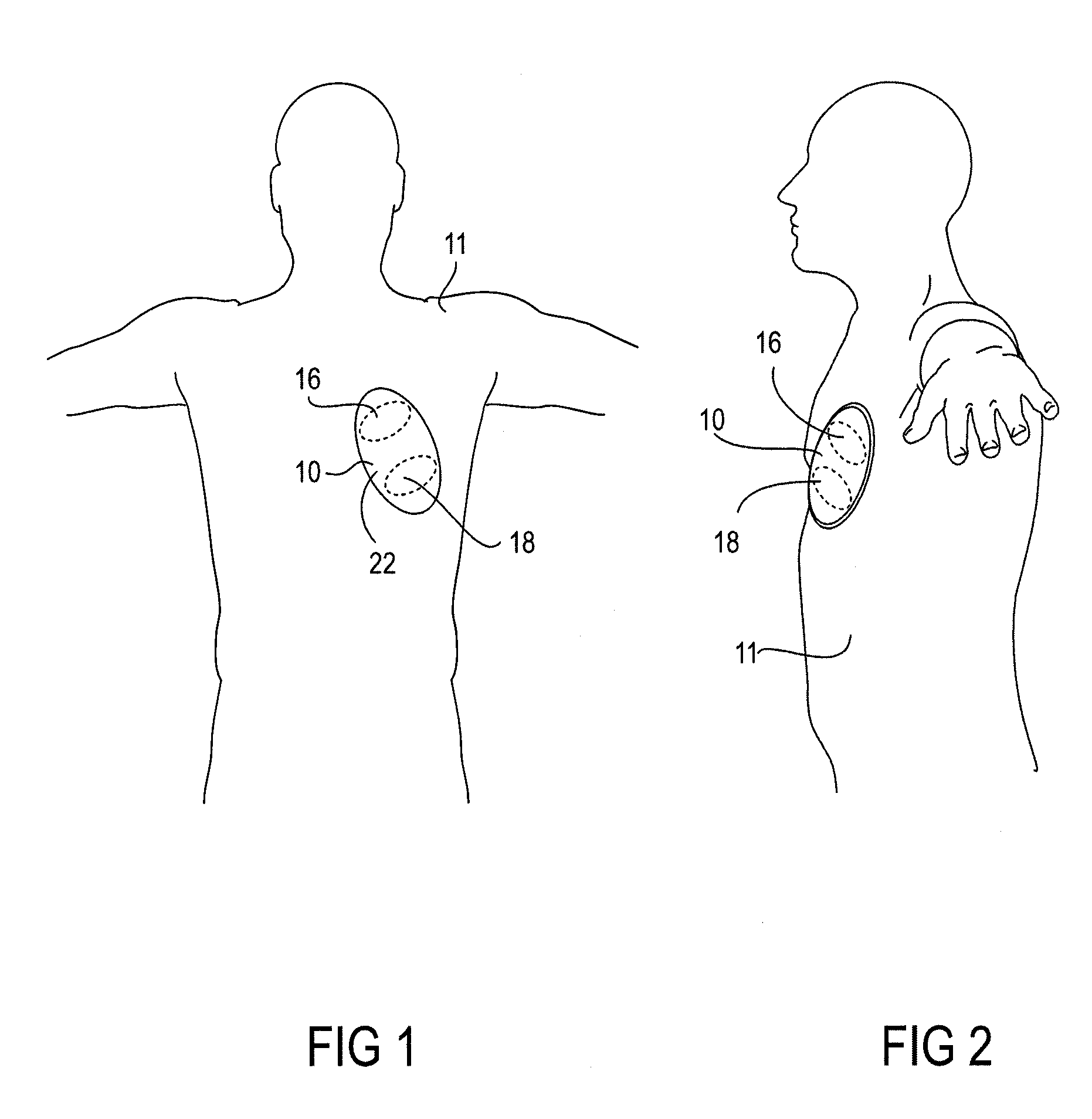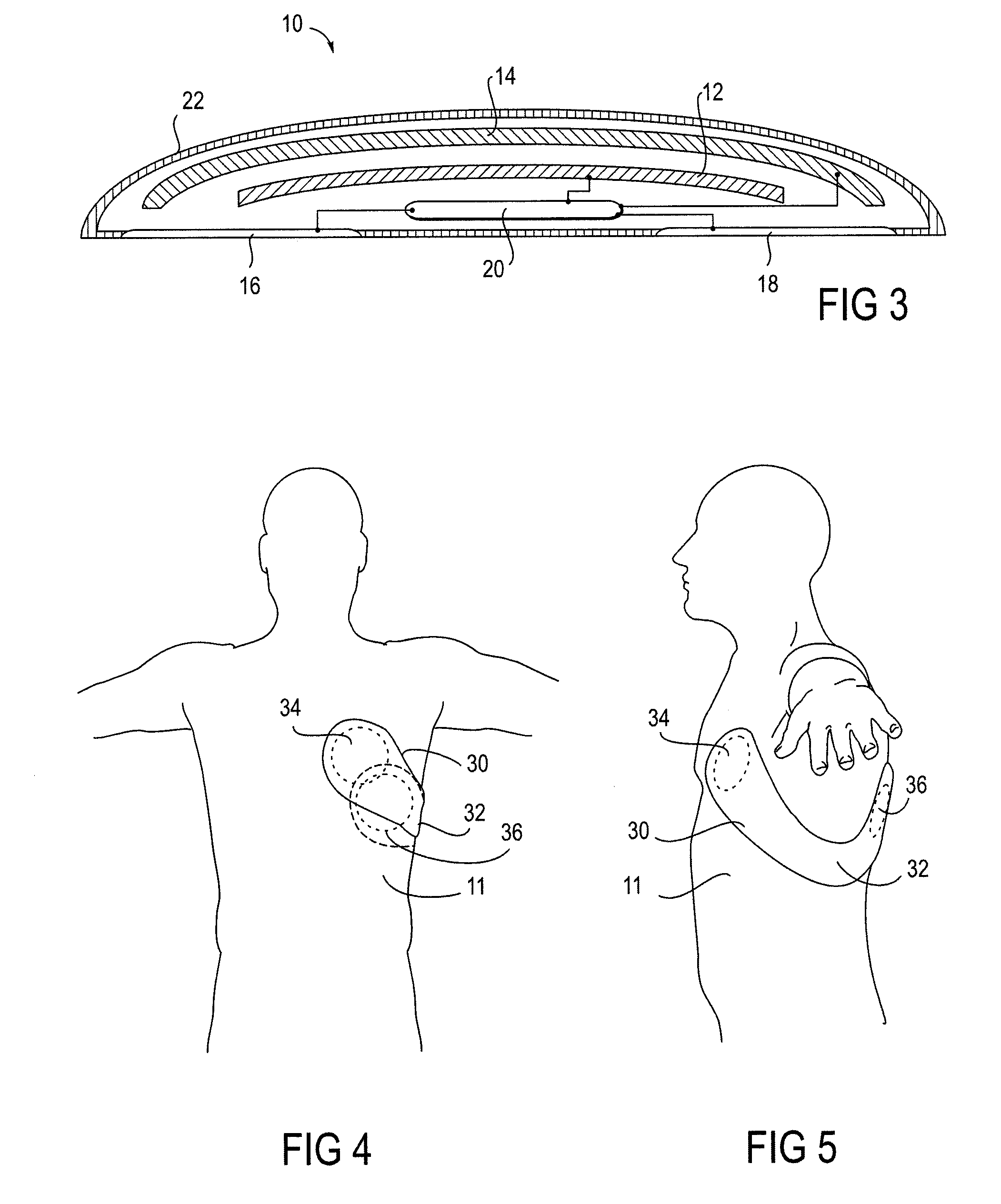External Defibrillator
a technology of external defibrillators and external electrodes, which is applied in the field of external defibrillators, can solve the problems of wearable defibrillators, lack of patient compliance, and lifevest products, and achieve the effects of avoiding permanent devices, minimal maintenance or care, and automatic operation
- Summary
- Abstract
- Description
- Claims
- Application Information
AI Technical Summary
Benefits of technology
Problems solved by technology
Method used
Image
Examples
Embodiment Construction
[0031]FIGS. 1-3 show one embodiment of the external defibrillator of this invention. (For purposes of this application, the terms “defibrillator” and “external defibrillator” include external cardioverters and cardioverter defibrillators as well.) As shown in FIGS. 1 and 2, defibrillator 10 has been engaged with a patient 11 by attaching to the front of the patient's torso. In this embodiment, defibrillator 10 has a battery 12, a capacitor 14, a pair of electrodes 16 and 18, and a controller 20. Capacitor 14 may have a capacitance between 25 and 300 micro Farads. Electrodes 16 and 18 are preferably at least 3 inches apart in order to place them in the proper orientation for use on an adult. In some embodiments, more than two electrodes may be used. A support 22 supports the battery, capacitor, electrodes and controller. In this embodiment, support 24 is a waterproof housing. Adhesive 24 on the electrode side of the defibrillator may be used to attach the defibrillator to the patient...
PUM
 Login to View More
Login to View More Abstract
Description
Claims
Application Information
 Login to View More
Login to View More - R&D
- Intellectual Property
- Life Sciences
- Materials
- Tech Scout
- Unparalleled Data Quality
- Higher Quality Content
- 60% Fewer Hallucinations
Browse by: Latest US Patents, China's latest patents, Technical Efficacy Thesaurus, Application Domain, Technology Topic, Popular Technical Reports.
© 2025 PatSnap. All rights reserved.Legal|Privacy policy|Modern Slavery Act Transparency Statement|Sitemap|About US| Contact US: help@patsnap.com



